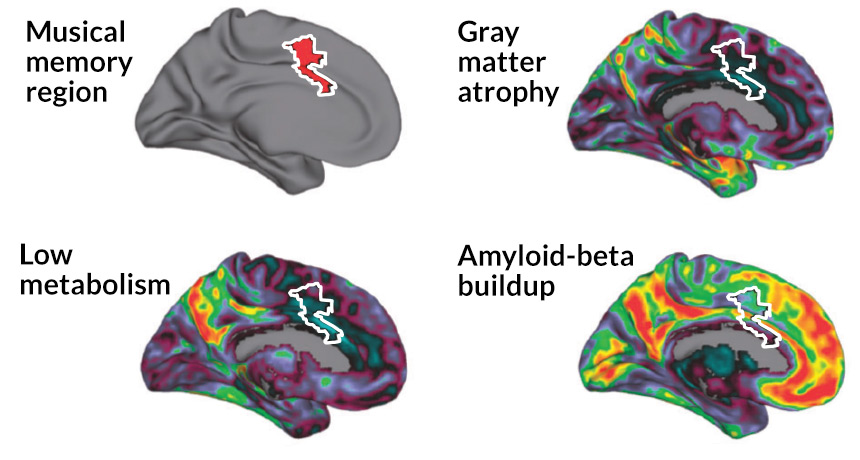Alzheimer’s spares brain’s music regions
Song familiarity survives dementia’s damage, study suggests

MUSIC MEMORIES A brain region that seems to be involved in recognizing familiar music (red, top left) showed relatively less gray matter thinning (top right) and higher metabolism (bottom left) than other parts of the brain, but still had substantial sticky amyloid-beta buildup (bottom right). Warmer colors are a sign of more advanced disease.
J.-H. Jacobsen et al./Brain 2015






